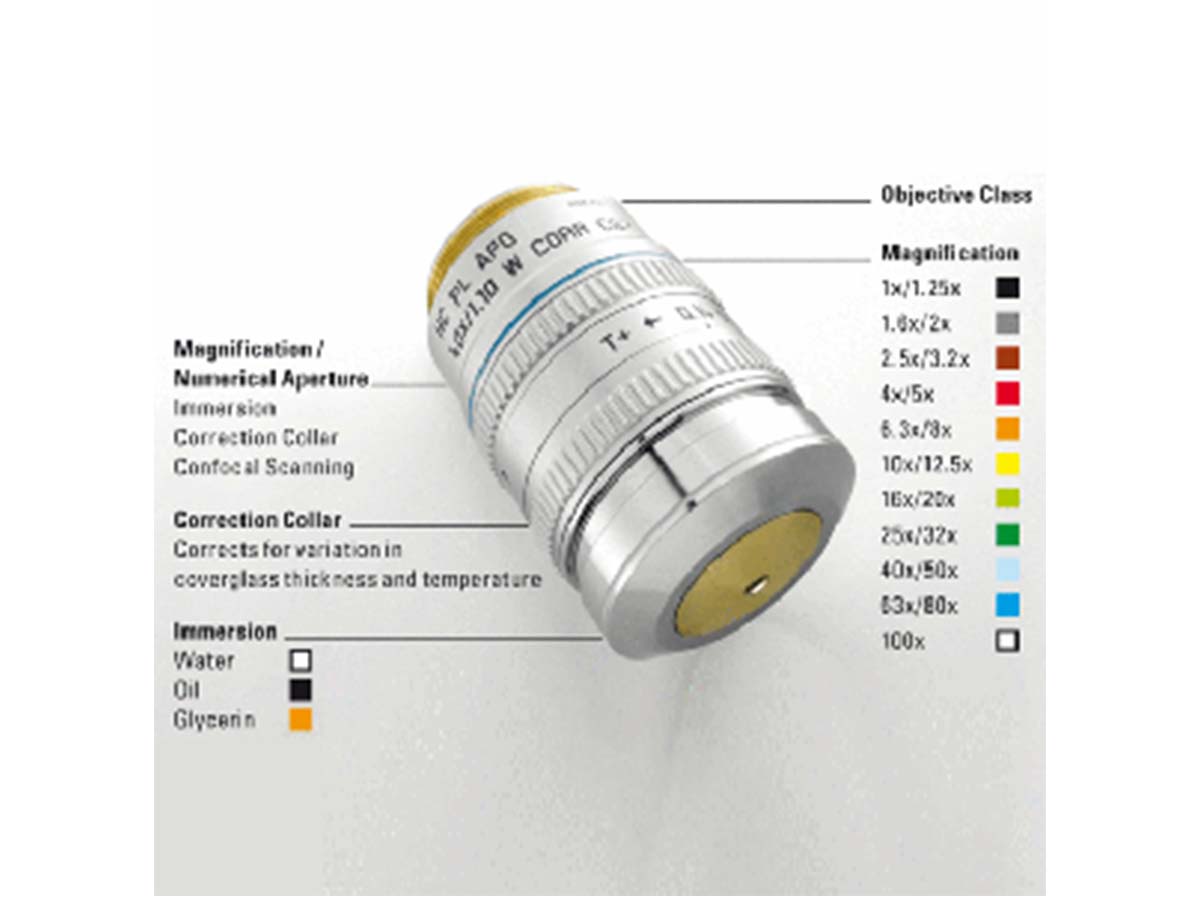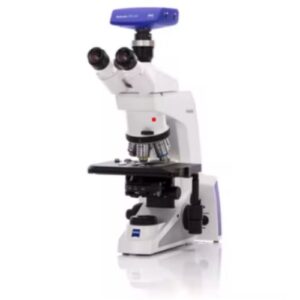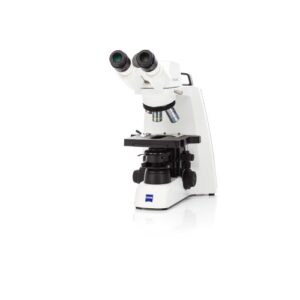The Microscope Objective Lens is a Critical Decision
When choosing a microscope and the associated lenses, many microscope users understand that the objective lens is a critical component to producing an excellent image. However, many people, when faced with the ultimate decision of what objective lens to select, do not have all the information to make an informed decision.
Simple and easily digestible information provided by lens manufacturers include immersion and numerical aperture. This information is in large print on the lens and makes it into the lens description on every quote. Aspects that are less obvious are levels of planar correction, registration in Z, lens coatings, and correction collars. These items are less obvious on a quote but critical to an excellent image that produces equally excellent data.
The objective class you choose, such as an Achromat, Semi-Apochromat, or Apochromat, will affect the final image. The ability of a lens to efficiently pass light and have the respective wavelength reach an identical focal plane is what the user observes in every image. When light is passed inefficiently at different points in the light spectrum or when wavelengths of light reach different focal planes, the final image is degraded which influences resolution, contrast, and color reproduction.
Correcting Lenses for Color in Brightfield
Dominant sources of distortion change with magnification, however, as a general rule correction is more critical at higher magnification. The simple answer is that imperfections are, well, magnified. However, regardless of magnification there are critical distortions that need to be corrected for an ideal image. Although not a complete list, these include field curvature (flatness of field), spherical aberration, image distortion, and axial color.
Without proper correction images appear out of focus on the edges (field curvature), blurry (spherical aberration), oddly shaped (distortion), and color fringes (axial color). Many of these corrections are addressed in every objective lens, however, the degree to which they are corrected depends on the name of the lens. For instance, although imperfect, Plan Apochromat has a higher degree of correction than Plan Achromat. Both are corrected, just at different levels.
In addition, although there are industry standards for lens correction, there is variance between manufacturers. In other words, just because two companies are presenting Plan Apochromat lenses does not mean they are identical in the quality of their correction.
All of the sources of a degraded image come down to contrast. Assuming the microscope has been aligned for Kohler illumination, the contrast provided by the lens provides the clean edges, crisp and vibrant color in a final image.
Correcting Lenses for Color in Fluorescence
Fluorescence presents its own set of challenges because of the nature of single wavelength excitation and emission and low light. Since glass passes light at different speeds depending on the wavelength being used, correcting for spherical aberration is a critical component particularly in multi-channel fluorescence applications.
Without correcting for spherical aberration, features in different fluorescence channels will appear in different focal planes. This is most noticeable in achromat lenses, but it can be detected in Plan Apochromat lenses in applications such as confocal microscopy.
In addition to Z registration of each wavelength, the objective lens will also pass light more or less efficiently based on wavelength. For instance, assuming the light source is providing an equal number of photons at each wavelength of light, an objective lens will pass the 500nm wavelength more efficiently than 400nm. This mean that labels that emit at the 500nm wavelength will appear brighter simply because of the objective lens being used!
Brightness variability is present throughout the visible light range, however, it can be corrected – albeit differently by each manufacturer. A general rule of thumb is that an Apochromat will be superior, however, without the transmission data for each lens, or a spectrophotometer, it is impossible to know.
Immersion matters
Whether you are imaging histology slides, observing adherent cells on a live cell imaging system, or focusing deep into brain tissue, there is a lens that is specific for the application. One of the most important, and often overlooked features of the lens is immersion and numerical aperture (NA). Similar to camera megapixels, many assume the higher the NA the better the resolution. Not true! The better the contrast the better the resolution!
As explained earlier, eliminating aberrations and distortions improve contrast which in turn improve resolution. So although NA is an important feature to resolution, it is not the only feature.
When selecting an immersion lens it is important to consider the medium that will be used. Will there be an aqueous medium as with live cells, dehydrated and mounted tissue section, or fresh brain tissue in solution? Each medium will dictate whether oil, glycerol, or water immersion is required. Without the immersion medium matched to the mounting medium distortions will degrade the resolution. One is much better selecting a lens with a lower NA that matches the mounting medium!
Trust W. Nuhsbaum, Inc
When evaluating lenses and microscope systems having a person to guide you through the decision making process is critical. The ability to offer information and expertise will ensure that you, the user, will end up with a system that is optimized for your experiments.
The microscope and imaging specialists at W. Nuhsbaum, Inc. have the expertise and resources available to make proper recommendations that go beyond megapixels and numerical aperture. Trust W. Nuhsbaum, Inc. to guide you through the microscope configuration process.




